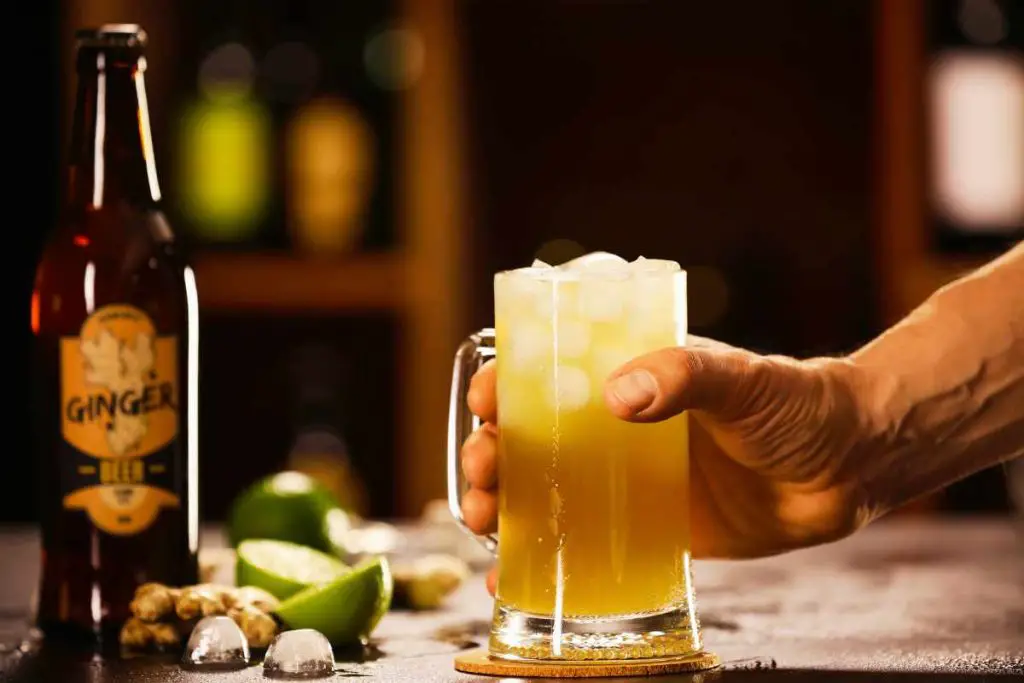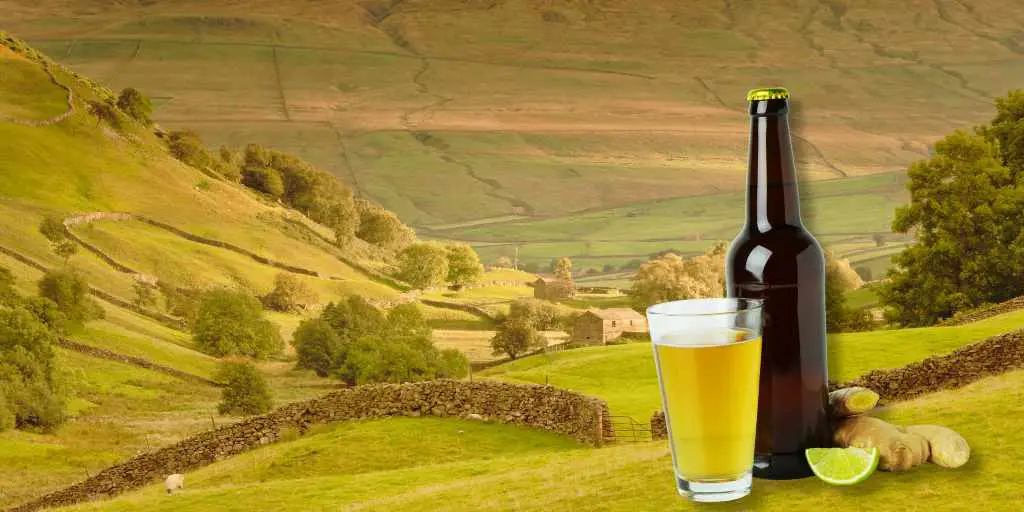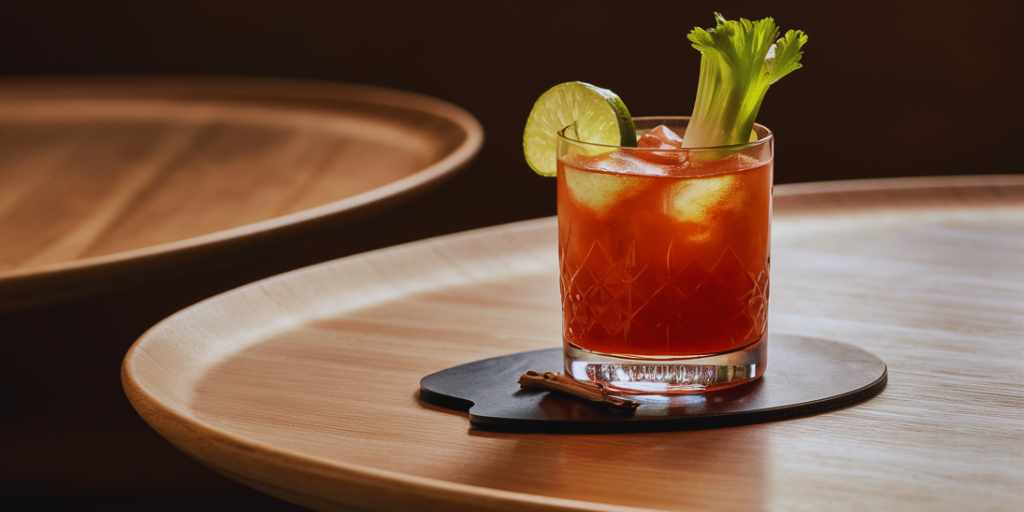Ginger beer, a beverage cherished by many for its refreshing taste and spicy kick, has a storied history that dates back centuries. Rooted in old-world traditions, this unique drink originated in Yorkshire, England, in the mid-18th century and quickly gained popularity across Britain, the United States, Ireland, South Africa, and Canada. It was initially created as a fermented alcoholic beverage using ginger for flavour, sugar for sweetness, and water, yet the recipes and brewing techniques have varied widely over time.
Key Takeaways
- Ginger beer has a rich history that began in 18th century Yorkshire, England, before spreading globally.
- The drink’s production has evolved from an alcoholic brew to include non-alcoholic varieties.
- Today’s ginger beer is integral to social events and the craft cocktail scene.
Origins and Historical Significance
Ginger beer’s roots can be traced to colonial trade activities that brought this spicy commodity from Southeast Asia to Europe. This fermented drink has evolved through history, harnessing the natural effervescence of what was known as the “ginger beer plant” to become a beloved beverage across many cultures.
Colonial Spice Trade and Early Ginger Beer
During the height of the colonial spice trade, European nations avidly sought exotic spices from Asia. Ginger, a pungent root rich in medicinal properties, was highly valued. It was in this milieu in the mid-18th century that early ginger beer originated, first documented in Yorkshire, England. It capitalized on ginger’s popularity and became a staple, leveraging the spice’s preservative qualities to create a long-lasting beverage that could endure the long sea voyages, embedding itself deeply in the maritime culture of the time. Its spread was partly due to its position in the lucrative spice trade.
Development of Traditional Ginger Beer
Traditional ginger beer was originally crafted in homes and small taverns using simple ingredients such as ginger root, sugar, water, and lemon. It was left to ferment with the “ginger beer plant,” a symbiotic culture of bacteria and yeast that carbonated the drink naturally. This crafted concoction was sometimes alcoholic ginger beer, though non-alcoholic versions were more common. The distinctive cloudy appearance and the unique flavour became synonymous with traditional recipes. The use of sturdy ginger beer bottles, designed to withstand the pressure of fermentation, showcases the adaptive changes in storage from earlier earthenware vessels. Over time, ginger beer’s popularity soared, and by the 20th century, it was being exported worldwide, becoming a global phenomenon.
Production and Ingredients
The production of ginger beer involves a fermentation process that creates its unique, strong ginger flavour. This section delves into the specific brewing steps and the key ingredients essential to the traditional ginger beer recipe.
The Brewing Process
Traditionally, ginger beer is produced by fermenting ginger spice, sugar, and water. The fermentation process begins with a symbiotic culture of yeast and lactic acid bacteria, which breaks down the sugar into alcohol and carbon dioxide through fermentation. For non-alcoholic versions, the mixture can only ferment briefly, limiting the alcohol content. The alcoholic variety, which was historically more common, involves a longer fermentation period. After fermentation, forced carbonation can be used for added fizz, or the beverage can naturally carbonate through the continued action of yeast in sealed bottles.
Key Ingredients
- Ginger: The essential component for the beverage’s characteristic flavour.
- Sugar: Sourced from sugar-producing islands or local markets, it serves as food for the yeast during fermentation.
- Lemon or Lime Juice: Adds a citrus note and may help balance the flavour and pH.
- Carbonated Water: Introduced in some modern recipes through natural fermentation or forced carbonation methods.
- Yeast: Converts the sugar water into alcohol and carbon dioxide, vital for fermentation.
The proper balance of ingredients is crucial to ensure a strong ginger flavour while maintaining the desired level of sweetness and carbonation.
Evolution to Modern Varieties
Changes in production methods and consumer preferences mark the transformation of ginger-related beverages from traditional recipes to their current forms. Modern ginger beers offer a diverse spectrum from artisanal to industrial, often blurring the lines with ginger ale.
From Ale to Beer
Ginger ale emerged as a sweeter, more carbonated soft drink than its counterpart. It has been widely consumed as a non-alcoholic beverage, often made with ginger extract. In contrast, ginger beer historically underwent a natural fermentation process, creating a drier, robust flavour profile with traces of alcohol. This distinction has gradually tapered as modern ginger beers adapt to a range of tastes, some retaining the traditional brewing methods. In contrast, others lean towards a softer, non-alcoholic profile akin to ginger ale.
Craft and Industrial Scale Brewing
On one end of the spectrum, craft brewing empowers enthusiasts to experiment with home brewing techniques, consciously tweaking production methods to create unique variations of ginger beer. These often contain the authentic ginger roots, contributing to their depth in flavour and establishing them as staple ingredients in mixed drinks. On the industrial scale, larger soft drink manufacturers produce ginger beer as a carbonated soft drink, broadening its appeal and accessibility as a mainstream choice among modern soft drinks. The alcohol content of these mass-produced varieties is typically negligible, making them suitable for all ages and aligning with the trend of non-alcoholic beverage options.
In essence, both craft and industrial-scale production methods cater to a wide audience, ensuring that modern ginger beers retain their place as refreshing and versatile drinks, whether enjoyed on their own or mixed in cocktails.
Cultural and Market Impact
Ginger beer’s cultural significance and market presence have evolved, with its role in social customs and its market adapting over time. Ginger beer has grown from its origins to become a popular drink in various forms, from traditional recipes to contemporary craft versions.
Ginger Beer in Social Customs
Historically, ginger beer was more than a simple refreshment; it was a fixture in social settings and family gatherings. Its initial popularity surged in the 18th and 19th centuries when it was created in earthenware bottles and often contained a significant alcohol level. The beverage was a staple in British and American social customs, particularly as a key ingredient in the Pimm’s Cup. This cocktail remains a traditional drink at British social events.
With the invention of excise tax laws, the production methods for ginger beers changed, leading to a decrease in alcohol content to avoid taxation. Despite this change, it remained a popular beverage, frequently found at social events and public gatherings.
Contemporary Ginger Beer Market
The modern market for ginger beers is diverse, with options ranging from artisanal brews to mass-produced sodas. In recent years, the craft cocktail movement has had a significant impact, revitalizing the drink’s popularity.
Cocktails like the Moscow Mule, famously served in a copper mug and mixed with dark rum, have introduced a new consumer base to the zesty flavour of ginger beer, often seeking a safer alternative to high-alcohol content drinks.
Bold flavours and clever branding have allowed companies to market their own ginger beer varieties effectively, leading to an expansion of the sector in the beverage market today. In addition to traditional methods, some manufacturers opt for a non-alcoholic ginger beer that appeals to a broad audience, further solidifying its position as a versatile and enduring drink choice.

Frequently Asked Questions
What are the historical origins of ginger beer?
Ginger beer is believed to have originated in the Caribbean in the 1700s, where it began as a fermented alcoholic beverage crafted using ginger, sugar, and water.
Why is it called ginger beer if it’s not beer?
The term “beer” relates to the original brewing process similar to that of traditional beers. Initially, ginger beer was a fermented drink containing alcohol, which lends to its name despite modern versions mainly being non-alcoholic.
How did ginger beer evolve to become a non-alcoholic beverage?
Due to changes in production methods and consumer preferences, ginger beer has mostly evolved into a non-alcoholic beverage. Modern ginger beers are manufactured rather than brewed, focusing on the flavour rather than alcohol content.
Can ginger beer be considered a traditional Jamaican drink?
Yes, ginger beer is traditionally linked to Jamaican culture. It’s a popular, non-alcoholic, carbonated beverage crafted from fresh ginger, water, and sugar.
Is ginger beer associated with specific cultural traditions in Australia?
While not exclusively associated with specific cultural traditions, ginger beer has been enjoyed across Australia since the 1800s. Its presence in Australia can be attributed to British influence and immigration.
What are the general ingredients and processes for making homemade ginger beer?
To make homemade ginger beer, ingredients like fresh ginger, sugar, lemon juice, water, and a fermentation agent like yeast are combined. The mixture is then fermented, producing a fizzy and slightly yeasty beverage.
In terms of dietary restrictions, is ginger beer considered halal?
Generally, ginger beer is considered halal as long as it contains no alcohol or non-halal flavouring agents. This is true for the non-alcoholic versions commonly produced and consumed today.






